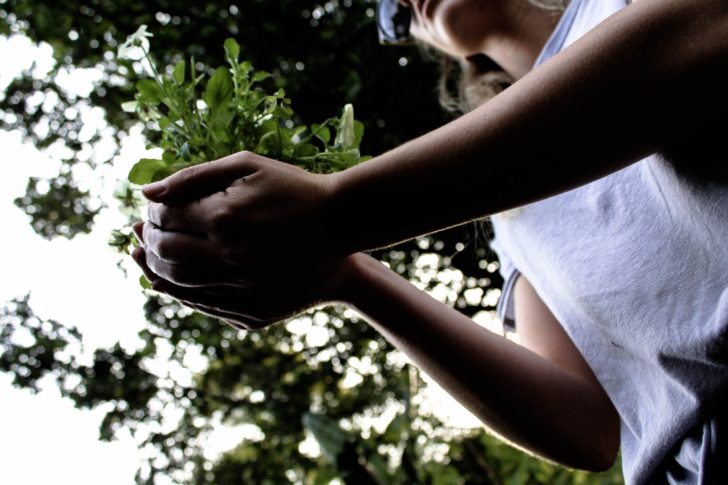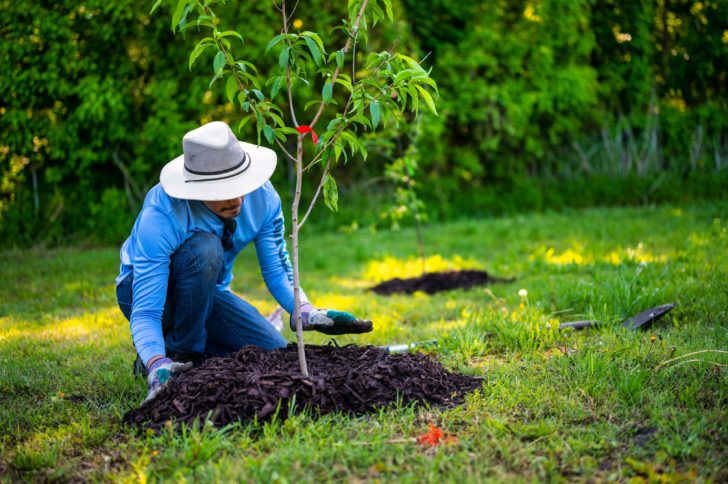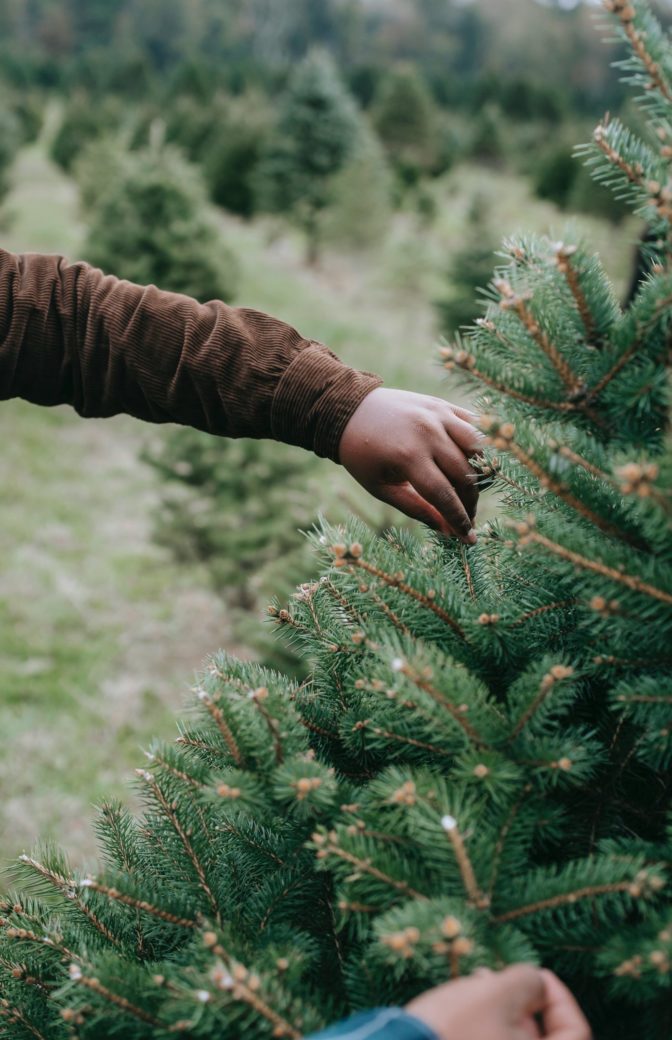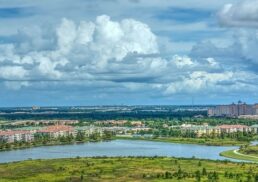Have you ever thought about the immense benefits that trees provide to our environment and communities? Tree planting is not only a rewarding activity but also an essential step towards a healthier and more sustainable future. In this guide, we will walk you through the entire tree planting process, from selecting the right tree for your location to providing post-planting care, while emphasizing the crucial role trees play in combating climate change. Read on to discover how you can contribute to greening efforts in your community and beyond!
Table of Contents
Key Takeaways
Choose the right tree for your location, considering climate and soil/site requirements as well as space constraints.
Prepare the planting site by clearing debris and weeds, amending soil, and ensuring utility line safety before carrying out the tree planting process.
Post-planting care such as watering, pruning & pest management are essential to ensure a healthy tree while community involvement in green initiatives can help create a greener environment.
Choosing the Right Tree for Your Location

Identifying the ideal tree for your location is key to its healthy growth and survival. It involves taking into account:
Climate
Soil
Site requirements
Space constraints
A thoughtful consideration of these factors not only boosts your property’s aesthetic appeal but also circumvents potential future maintenance costs and issues, making it more attractive for ads.
Wondering how to determine the best tree to plant? Here’s a deeper exploration of these factors.
Climate Considerations
The climate of your location plays a significant role in tree species selection. Temperature requirements for optimal growth and survival vary among tree species, with some being more tolerant of increased temperatures or cold hardiness than others. For additional information on selecting the right tree for your area, consider consulting a local expert or researching online resources.
Precipitation is another crucial factor, as the amount and distribution of rainfall in an area dictate the types of trees that can thrive there. An understanding of climate considerations equips you to select a tree species that will flourish in your unique habitat.
Soil and Site Requirements
In addition to climate, soil type, drainage, and sunlight exposure play significant roles in tree growth and health. Different tree species have varying soil pH preferences, with some thriving in slightly acidic to neutral soils while others tolerate alkaline conditions.
Adequate drainage is essential to prevent root rot and other diseases, and most trees require at least 6 hours of direct sunlight daily. A careful evaluation of these factors sets the stage for a thriving environment for your tree’s growth and prosperity.
Space Constraints
Lastly, it’s essential to consider the mature size of the tree and its proximity to structures and utilities. Planting tall-growing trees near overhead utility lines can lead to aesthetic issues, service interruptions, and potential safety hazards.
Moreover, it is advised to plant trees at a distance of 1/2 of their mature canopy width from a house or building to avoid future complications. Accounting for space constraints ensures your tree has ample room for growth without causing any complications.
Preparing the Planting Site

Before you plant your tree, proper site preparation is key. This includes clearing debris and weeds, amending soil if necessary, and ensuring utility line safety. Preparing the site correctly paves the way for a conducive environment for your tree’s growth and survival.
Here are the steps involved in preparing the planting site.
Clearing Debris and Weeds
Removing debris, rocks, and weeds from the planting area is crucial for promoting healthy root growth. Eliminating these obstacles reduces the risk of infestation, disease transmission, and competition for nutrients and water with your tree. Utilize appropriate tools and methods, such as hand-pulling, hoeing, or shallow cultivation, to remove weeds.
Clearing the planting site sets a clean and visually pleasing stage for a thriving tree.
Soil Amendments
While it’s generally not necessary to amend the soil before planting a tree, certain situations may call for it. Amendments like organic matter and kelp can enhance soil structure and fertility, providing a better environment for plant growth.
If needed, amend the ground with these materials to improve drainage and fertility, ensuring a strong foundation for your tree.
Utility Line Safety
Before digging, it’s crucial to contact your local utility company to locate and mark underground lines, preventing potential damage and hazards.
Adhering to their guidelines and maintaining a safe distance from power lines guarantees a safe and successful tree planting experience.
The Tree Planting Process
Now that you’ve selected the right tree and prepared the site, it’s time to plant! The tree planting process involves digging an appropriate hole, positioning the tree correctly, and providing support and mulch.
Following these steps gives your tree the best chance for growth and survival.
Digging the Hole
To create a suitable environment for your tree’s roots, dig a hole that is wide and shallow, allowing them to spread out easily. This helps the tree establish a firm foundation and promotes healthy root growth, ensuring a strong and stable tree.
Positioning the Tree
Place the tree in the hole, ensuring the trunk flare is visible and the tree is straight. This will guarantee that the tree is planted at the appropriate depth and will grow in the desired direction.
Correctly positioning the tree aids in its flourishing and the development of a robust structure.
Staking and Mulching
Stake the tree if necessary for support, using appropriate materials such as wide canvas strapping or rubber tubing. Apply a layer of mulch around the base of the tree to conserve moisture and regulate soil temperature.
This final step in the planting process not only supports the tree but also promotes a healthy environment for growth.
Post-Planting Tree Care

A newly planted tree requires proper care to ensure its health and longevity, just like other plants. This includes regular watering, pruning, and pest management.
Providing necessary care and services maintains the health and vitality of your tree, empowering it to reach its full potential.
Watering
Water your newly planted tree regularly, adjusting the frequency based on weather conditions and tree species. Proper hydration is essential for the tree’s survival and growth, particularly during hot summer months or periods of drought.
Consistent and appropriate watering ensures a thriving and healthy tree.
Pruning
Prune your tree as needed to remove dead or damaged branches and promote healthy growth. Pruning during the dormant season is ideal, as it reduces the potential for disease and allows for healthier growth in the spring.
Practicing proper pruning techniques maintains the tree’s health while enhancing its overall shape and structure.
Pest Management
Monitor your tree for pests and diseases, taking appropriate action to protect its health. Employ organic methods, such as promoting natural predators or using homemade organic pesticides, to manage pests while minimizing harm to the environment.
Staying vigilant and promptly addressing pest issues preserves the health and longevity of your tree.
The Role of Trees in Combating Climate Change
As our world faces the challenges of climate change, trees play a crucial role in mitigating its effects. They contribute to carbon sequestration, air quality improvement, and habitat creation, providing vital environmental benefits.
Here’s a look at these contributions and their significance in combating climate change through videos.
Carbon Sequestration
Trees absorb and store carbon dioxide through the process of carbon sequestration, helping to reduce greenhouse gas emissions. Increasing tree plantation boosts the amount of carbon dioxide we can remove from the atmosphere, mitigating climate change effects and fostering a healthier environment.
Air Quality Improvement
Trees improve air quality by filtering pollutants and producing oxygen. They act as natural filters, reducing air pollution and providing cleaner, healthier air for us to breathe.
Planting more trees enhances air quality, paving the way for a more sustainable future.
Habitat Creation
Planting trees creates habitats for various wildlife species, promoting biodiversity and supporting a diverse ecosystem. By providing shelter, food, and nesting sites for wildlife, trees contribute to the conservation of nature and the overall health of our planet.
Therefore, having a tree planted serves as a critical step towards preserving our environment and its inhabitants.
Community Involvement in Tree Planting
Community involvement in tree planting is an invaluable way to contribute to greening efforts and promote a healthier environment. Participation in local programs and understanding the benefits of community tree planting empowers individuals to significantly impact their neighborhoods and the planet.
Local Programs and Organizations
Joining local tree planting organizations or programs is a fantastic way to contribute to your community’s greening efforts. These organizations not only promote tree planting but also provide resources and support to help individuals and communities make a positive impact on their environment.
Getting involved empowers you to play a pivotal role in fostering a greener, healthier community.
Benefits of Community Tree Planting
Community tree planting provides numerous benefits, including:
Improved air quality
Reduced energy costs
Enhanced property values
Fostering a sense of community pride
Bringing people together to work towards a common goal.
Participating in community tree planting efforts enables you to leave a lasting impact on your neighborhood and contribute towards a sustainable future.
Learn more, visit The Social and Economic Benefits of Planting Trees.
Summary
In conclusion, tree planting is an essential and rewarding activity that benefits both our environment and communities. By selecting the right tree, preparing the site, following the planting process, and providing proper post-planting care, you can ensure a healthy and thriving tree. As trees play a crucial role in combating climate change, community involvement in tree planting initiatives is invaluable. By working together, we can create greener, healthier communities and contribute to a more sustainable future.
Frequently Asked Questions
How do you plant a tree for beginners?
To plant a tree for beginners, dig a shallow, broad planting hole and place the root ball into it. Make sure the trunk flare is above ground and fill in the soil around it gently but firmly. Don’t amend the soil or compact it, and water properly until the tree is established. Add mulch to complete the process.
What is the best time to plant a new tree?
The best time to plant a new tree is during the dormant seasons of fall and early spring, when temperatures are cool and leaves have dropped or before buds break. This allows time for plants to establish roots in the new location before warmer weather stimulates new top growth.
Can planting trees really help fight climate change?
Planting trees can absolutely help fight climate change. They remove carbon dioxide from the atmosphere through photosynthesis, store the carbon and release oxygen into the air. They are a key solution to the climate crisis, helping to stop climate change by reducing emissions.
How to get free trees in Texas?
Reach out to your local municipality to inquire about free tree programs. Additionally, the Arbor Day Foundation and Texas Forest Service West Texas Nursery offer very low-cost saplings or trees.
How many trees in world?
It is estimated that there are 3.04 trillion trees in the world, according to a study published in Nature journal. That equates to approximately 422 trees for every person on Earth. Sadly, this number is much smaller than it used to be.









